Research on Design of Lithium Ion Battery and Its Charger
Foreword
This article refers to the address: http://
Portable electronic products use batteries as a power source. With the rapid development of portable products, the amount of various batteries has increased, and many new batteries have been developed. In addition to the familiar alkaline batteries, rechargeable nickel-cadmium batteries, and nickel-metal hydride batteries, there are also lithium-ion batteries that have become mainstream in recent years. Here you will find information about lithium-ion batteries, including its characteristics, main parameters, application range, and finally provide a reference for the design of lithium-ion battery charging lines.
Development and application of lithium ion battery
Lithium-ion battery is the most widely used rechargeable battery. It can be made into flat rectangular, cylindrical, rectangular and button type according to the requirements of different electronic products. It can be used for low-power applications in single-cell batteries. Multi-cell batteries are connected in series and parallel for higher voltage and capacity for power tools and notebook computers. The electrolyte in the lithium ion battery may be a gel, a polymer (lithium ion/lithium polymer battery), or a mixture of a gel and a polymer. Since no polymer capable of efficiently transporting lithium ions at room temperature has been found, most lithium ion/lithium polymer batteries are actually hybrid batteries that combine gel and polymer.
Lithium-ion batteries are different from ordinary chemical batteries. The charging and discharging process is realized by the insertion and deintercalation of lithium ions in the positive and negative electrodes of the battery. When the battery is charged, lithium ions are generated on the positive electrode of the battery. The generated lithium ions move to the negative electrode through the electrolyte. The carbon as the negative electrode has a layered structure, and it has many micropores. The lithium ions reaching the negative electrode are embedded in the micropores of the carbon layer, and the more lithium ions are embedded, the higher the charging capacity. Also, when the battery is discharged, lithium ions embedded in the carbon layer of the negative electrode are released and moved back to the positive electrode. The more lithium ions return to the positive electrode, the higher the discharge capacity. What we usually call battery capacity refers to the discharge capacity. During charge and discharge, lithium ions are in a cyclic motion state from the positive electrode to the negative electrode to the positive electrode. Since lithium ions are used in the ionic state instead of lithium metal, the risk is low and the safety is high.
Battery characteristics
The performance parameters of the battery mainly include electromotive force, capacity, specific energy and resistance. The electromotive force is equal to the work done by the non-electrostatic force (chemical force) of the battery when the positive charge is moved from the inside of the battery to the positive electrode. The electromotive force depends on the chemistry of the electrode material and is independent of the size of the battery. The total amount of charge that the battery can output is the capacity of the battery, usually in ampere-hours.
In a battery reaction, the electrical energy produced per kilogram of reactive material is called the theoretical specific energy of the battery. The specific energy refers to the energy stored per unit weight or unit volume, expressed in Wh/kg or Wh/L. Wh is the unit of energy, W is watt, h is hour; kg is kilogram (weight unit), and L is liter (volume unit). The actual specific energy of the battery is smaller than the theoretical specific energy. Because the reactants in the battery are not all in accordance with the battery reaction, and the internal resistance of the battery also causes a voltage drop. On the other hand, the larger the cross-sectional area of ​​the current flowing through the battery, the smaller the internal resistance. The most important feature of lithium-ion batteries is the high specific energy. Today's lithium-ion battery technology can achieve a specific energy of 80~120 wh/kg, while the traditional lead-acid battery has a specific energy of only 30~40 wh/kg, so the lithium-ion battery It can store higher energy in a smaller volume, helping to focus on thin, short mobile electronic devices and electric vehicle applications requiring high endurance.
The following also lists several characteristics of lithium-ion batteries: high capacity: lithium-ion batteries weigh half of the same capacity of nickel-cadmium or nickel-hydrogen batteries, the volume is 20-30% of nickel-cadmium, 35-50% of nickel-hydrogen .
â— High voltage: A lithium-ion battery cell operates at 3.7V (nominal), which is equivalent to three nickel-cadmium or nickel-hydrogen batteries connected in series.
â— High stability: Due to the lack of metal lithium, the risk is low, so it is not subject to the restrictions imposed by the aircraft on the prohibition of carrying on passenger aircraft.
â— Long life: When the rechargeable lithium-ion battery is fully charged, the voltage is about 4.2 volts. When discharging, the voltage will drop, but it should not be lower than about 2.5 volts. The stored voltage or factory voltage is about 3.6 to 3.7 volts. The main service life is the number of charging times. The excellent rechargeable lithium-ion battery has a life of more than 500 times (calculated from 2.5 volts to 4.2 volts), and the lithium-ion battery has no memory effect.
â— Fast charging: Using a constant voltage / constant current charger with a rated voltage of 4.2V, the lithium ion battery can be fully charged within 1~2.5 hours. However, it should be noted that if the charging voltage exceeds 4.3 volts or more, there is a danger of explosion. If the battery voltage is lower than 2.0 volts, the lithium-ion battery is damaged and cannot be used or charged.
Battery charging method
It can be known from the above that lithium-ion batteries have the advantages of high capacity and long life, but special attention should be paid to charge and discharge. Therefore, all rechargeable lithium-ion batteries need to be equipped with their "charge and discharge management IC" to limit charging. And the discharge voltage to ensure that the battery does not exceed the safe voltage to cause the battery to explode. When the battery voltage is lower than 2.5V, the output is cut off to avoid shortening the battery life. Except for a few standard products, most lithium-ion batteries vary in size and are mainly used in practical applications. The capacity specifications are also different. Therefore, the charging current is designed and specified by each manufacturer. There is a so-called fast charge or slow charge mode depending on the magnitude of the current; however, the charging mode of a large current usually has a loss of service life. Although the battery pack already contains a charge management IC, this is only the minimum protection against battery explosion or combustion, rather than the normal way of use. To fully realize the battery life and efficiency, the charger design still needs to leave this one. The upper and lower limits are far away.
In addition to over-discharge, lithium-ion batteries are also not suitable for high-current discharges, which reduce discharge time when large currents are discharged (higher temperatures are generated internally and energy is lost). Therefore, the battery manufacturer specifies the maximum discharge current of the product, which should be less than the maximum discharge current in use. Lithium-ion batteries have high requirements on charging quality, and require precise charging circuits to ensure the safety of charging. In particular, it is required to terminate the charging voltage within 1% of the rated value (for example, a lithium-ion battery with a charge of 4.2V, the tolerance is Overvoltage charging of ±0.042V) may cause permanent damage to the lithium ion battery, which may cause the battery to explode; the charging current of the lithium ion battery shall be selected according to the specifications of the battery manufacturer. Although some battery charging currents are nominally up to 2C (C is the capacity of the battery, such as 1000mAh, 1C charging rate is 1A), but high charging current will reduce battery life, so the commonly used charging rate is 0.25C. ~1C. Because the electrochemical reaction of the charging process generates heat, there is a certain energy loss; in addition, the lithium ion battery charging is not all charged with constant current, and there is constant voltage mode charging, so the actual charging time is about 2.5 hours; lithium ion battery charging The temperature ranges from 0 ° C to 60 ° C. If the charging current is too high, the temperature will be too high, which will not only damage the battery but may cause an explosion. Therefore, when charging at a high current, it is necessary to perform temperature detection on the battery, and when the set charging temperature is exceeded, the charging can be stopped to ensure safety. In addition, the charger circuit has a set current limiting resistor to ensure that the charging current does not exceed the set limit current.
Currently, lithium-ion battery chargers often use a three-stage charging method, namely, Pre-Charging Mode, Fast Charging Mode, and Constant Voltage Mode. The lithium ion battery terminated discharge voltage was 2.5V. A well-designed charger provides rescue and repair of over-discharged batteries, ie pre-treatment before formal charging. Check the voltage of the battery before charging: If the battery voltage is greater than 3V, it will be charged in the normal way; if the battery voltage is lower than 3V, charging with a small current (about 10% of the constant current mode charging current) is called pre-charging. The mode reduces the passivation film dissolved in a deep discharge state. In addition, when the battery is over-discharged, it may also release part of the copper metal to cause a short circuit at the anode. At this time, forced charging with a high current may cause the battery to overheat, and the pre-charging stage can avoid this phenomenon. After charging to 3V, charge it in the normal constant current mode.
When the battery voltage is greater than 3V, the charging characteristics of charging in the normal manner are as shown in Fig. 1 (taking a 4.2V lithium ion battery as an example). At the beginning, the battery is charged in a constant current mode. At this time, the battery voltage rises with a faster slope. As the battery power storage increases, the battery voltage rise slope gradually decreases. When it rises to near 4.2V, the constant current charging phase ends. The charger is charged with a constant voltage of 4.2V. When charging in the constant voltage phase, the voltage is almost constant, but the charging current continues to decrease. When the charging current drops to a certain value, the timer is activated, and after a period of counting is turned off, the charging is terminated, and the charging process is completed.

Figure 1: Typical Li-Ion Battery Charging Curve
The output regulation accuracy of constant voltage charging is important for maximizing battery capacity and extending battery life. When the battery voltage is lower than 4.2V, it may cause the battery to be insufficiently charged. Although it does not affect the life, it will reduce the battery storage capacity. For example, if the degree of undercharging reaches 1% of the total voltage, the battery storage capacity will be reduced by 8%. On the other hand, if the battery voltage is too high, the battery will be overcharged to shorten the service life and even cause danger to the user. In order to ensure the safety of charging the lithium ion battery, the ambient temperature at the start of charging must be between 0 °C and 45 °C. Charging at lower temperatures creates more metallic lithium, which can result in increased battery impedance and battery degradation. Charging in a high temperature environment increases the reaction of lithium ions with the electrolyte to accelerate battery degradation.
In general, it is recommended that the battery be charged to 70 - 80% for storage when not in use for a long time. This is also to prevent the lithium ion battery from failing below 2.0 volts after a long period of natural discharge, causing the lithium ion battery to fail and cannot be used. The way in which the lithium-ion battery is depleted is often shortened by at least half the life of the battery.
Lithium ion charger design example
To meet the demand for more accurate and safer charger applications for low-power portable products, many IC manufacturers have developed low-cost linear chargers. Figure 2 is a design example of Tongjia Technology's LD6275 charging IC, which constitutes a stand-alone linear charger circuit that requires only a few external parts, and has a maximum charging current of 1.5A.
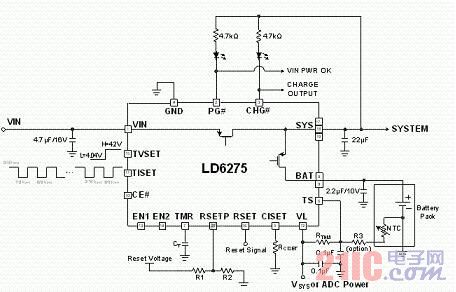
Figure 2: LD6275 application circuit diagram
The LD6275 is a highly integrated lithium-ion battery linear charger IC with active power path management to adjust the battery charging current in real-time while loading/unloading the load current, effectively monitoring the input current (ie the output of the USB port) Current), in accordance with the requirements of the inrush current limit and soft activation function specified by USB – IF. In addition, the temperature detection function is integrated in the IC if the IC temperature exceeds the set value. The charging current is automatically reduced to protect the chip from damage.
The LD6275 depressurizes the 5V DC power supply of the power adapter/USBåŸ to charge the Li-Ion battery. To prevent over-current overload of the power adapter, the external resistor RCISET can be used to set the maximum charging current limit. At the same time, it supports the USB port charging mode of the computer and is set according to the external pins EN1 and EN2. See Table 1 for each mode. By setting the USB 500mA and USB 100mA operating modes, you can protect the PC side USB from overload.

Table 1: Charging mode settings
The LD6275 has an adaptive power path management (APPM) function, which is mainly used to supply power to the system, supplemented by charging the battery, as shown in Figure 3; when the system uses more power than the input power supply limit At the same time, the battery can also actively turn on the discharge function and supply the required power demand to the system end, as shown in FIG.

Figure 4. APPM
The LD6275 open two-stage battery set voltage and charging current adjustment, can be dynamically adjusted according to its needs, such as to meet the Japanese JEITA specifications to adjust the charger settings according to the temperature of the battery, as shown in Figure 5.
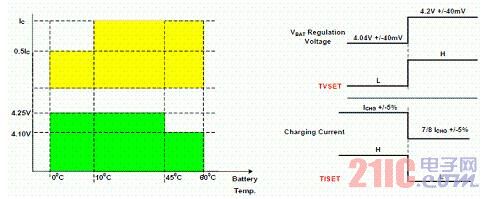
Figure 5: TVSET, TISET adjustment
Since the LD6275 itself consumes a small electrode, it is only 1~2mA, which can be neglected. Therefore, the heating power Pd of the IC itself can be calculated by the following formula:
![]()
Vin is the input power supply voltage, the working range is 4.1V~6V. VBAT is the battery voltage, which can be set from 0~4.2V, ICHG is the set charging current, which is set by the external resistor RCISET. When the battery voltage is lower than 3V, it will enter the pre-charge mode, and the IC internally presets to charge at 10% of the ICHG.
Assume that a single 1200mAh lithium-ion battery is charged with a 5.5V power supply. When the charging current is fast at 0.7°C and the battery voltage is 3V, the maximum power consumption of the IC operation can be estimated as 1.762W. The maximum power, this power consumption will make the thermal impedance 60 ° C / W 3 × 3 mm QFN package temperature rise 127 ° C, even if the ambient temperature 0 ° C, has exceeded the maximum allowable 125 ° C silicon chip operating temperature . If the charging current is set to 0.6A (0.5C), the IC temperature rise can be reduced to 90 degrees, and it can be operated at an ambient temperature of 35 degrees, so it is a preferred set current.
It can be known from the above that the operating range of the fast charging steady current value and the power supply voltage is quite important for the linear charger. The fundamental problem with linear chargers is the high temperature of the chip during operation, which necessitates a trade-off between the charging current and the heat sink. However, the application range of linear chargers is that portable products that require thin and light requirements, plastic housings with poor thermal conductivity, and metal heat sinks are not considered. Finally, the designer only needs to reduce the charging current and extend the charging time in exchange for lower Operating temperature. Based on portable product users, it is hoped that charging can be completed in 1-2 hours, so linear chargers are generally suitable for low-capacity lithium-ion battery applications below 1500mAh. For applications with high input/output voltage differences or high-capacity battery charging applications, consider using a synchronous switching charger.
Figure 6 shows the standard charging process for the Li-Ion battery charger. First, the charging IC detects whether there is an output short-circuit or overload protection mode. If the system is all normal, then the initial voltage of the battery is detected to be above 3V, which is higher than 3V. High-current charging is performed directly in the fast charge mode. If the battery is lower than 3V, enter the pre-charge mode, charge at 10% of the fast charge, wake up the battery and avoid battery damage. During the pre-charging phase, the battery voltage is still detected at any time, and after reaching 3V, it can be cut into the fast charging mode.
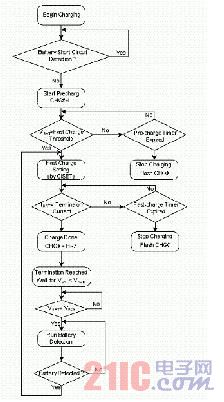
Figure 6: Standard charging procedure for a Li-Ion battery charger
In the fast charge mode, the voltage of the battery rises at a higher speed. When it rises to 4.2V, it switches to a constant voltage of 4.2V, and the current is limited by the internal resistance of the battery. At this time, the charging current is like Figure 1. The CV stage. As time passes, the charging current exhibits an exponential curve that decreases, and when it reaches 10% of the set current ICHG, the charger is turned off, indicating that charging is complete.
However, when the battery fails, the battery may not be able to store power, the voltage will not rise, and the charged energy will be converted into heat. In addition to relying on the over temperature protection mechanism, the IC also has a timeout timer inside, regardless of the battery at this time. What is the voltage state, as long as the set charging time is exceeded, the charger is turned off to achieve the function of multiple protection users.
It is also possible for the user to withdraw the battery after the charging or charging has been completed without removing the power supply. To avoid danger, the IC should have a battery presence detection mechanism as shown in Figures 7 and 8. The charging IC extracts the battery current in a short pulse (2ms pulse every 370ms). If the battery is present, the detected battery voltage should be greater than a preset threshold; if the battery has been disconnected, the charging IC When a low voltage is detected, it can be determined that the battery is disconnected, and the battery terminal voltage is cut off to protect the user's safety.
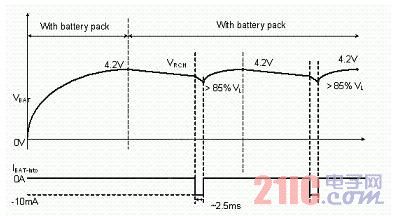
Figure 7. Battery presence detection mechanism
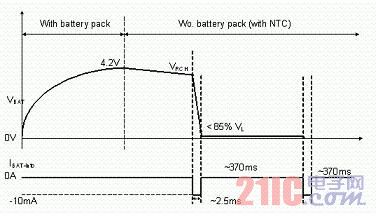
Figure 8: Battery Removal Detection Mechanism
in conclusion
Lithium-ion batteries have been widely used in portable devices such as notebook computers, video cameras, and mobile communications due to their unique performance advantages. The new generation of polymer lithium-ion batteries can be thinned, arbitrarily aread and arbitrarily shaped in shape, greatly improving the flexibility of battery design. At the same time, the unit energy of the polymer lithium ion battery is 20% higher than that of the current general lithium ion battery, and its capacity and environmental performance are improved compared with the lithium ion battery. Therefore, it is foreseeable that the future of lithium-ion battery chargers will also be toward the future development trend towards faster charging rates and more robust system protection.
The Instax Instant Mini Film is compatible for use with the Fujifilm instax mini series of cameras.
This film features vivid color reproduction with natural skin tones when used under daylight (5500K) or electronic flash lighting conditions.
A refined grain structure provides high image sharpness and clarity as well as a versatile ISO 800 film speed for use with a wide variety of subjects.
instant developing is possible when working in temperatures between 41-104F.
Instax Mini Film,Fujifilm Mini Film,Camera Instax Mini Film,Instax Mini Instant Film
GuangZhou CAIUL Digital Products CO,.LTD. , https://www.caiul-instax.com